The Dead Sea and Jerusalem are two of the highlights of your visit to Israel. We were lucky that our citytrip to Tel Aviv included time for a trip to the Dead Sea and Jerusalem.
Dead Sea
The first Israel highlight is the Dead Sea, a lake of over 600 km² on the border between Israel and Jordan. The surface of the Dead Sea lies at 429 below sea level (in 2005), and is Earth’s lowest-lying location. The water level decreases every year by about a meter, and the lake has now divided into two separate parts. The smaller part features hotels on its shores, and the Dead Sea is accessible for tourists.
As the current estimate is that the Dead Sea will disappear altogether in about 50 years without any help, several projects have now started to protect the Dead Sea.
One of the solutions is using water from the Red Sea. A special canal brings the water from the Red Sea to the Dead Sea.
In some other places, the water level of the Dead Sea is rising because of the large salt deposits on the bottom. Because nearby hotels have become under threat, they have started dredging the salt.
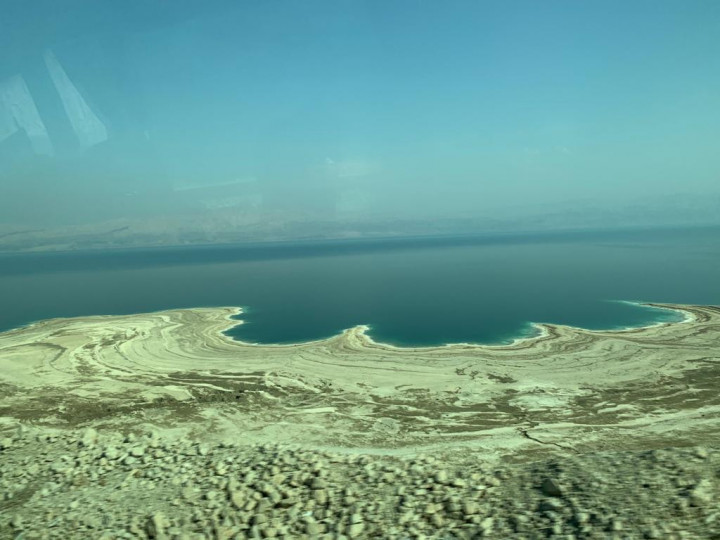
Why is the Dead Sea so salty?
The water from the Dead Sea is collected from a large catchment area. The Jordan is the only river that discharges into the Dead Sea. The water that is collected in the lake mostly evaporates, and thus the minerals and salts are deposited.
The Dead Sea has a salinity of 33%, and is the 3rd saltiest lake on Earth, after the Don Juan Pond in Antarctica and Lake Assal in Djibouti.
A comparison: a litre of sea water contains about 35 grams of salt. A litre of Dead Sea water contains 280 grams of salt.
Is the Dead Sea really dead?
The high salinity means that there are no fish, algae, or other sea animals that live in the Dead Sea. However, there are small microbes in the water which, in turn, means that the Dead Sea is not really dead.
The Dead Sa and Psoriasis
The Dead Sea is popular because of the beneficial effects for skin conditions such as psoriasis and vitiligo. A trip to the Dead Sea is also recommended for people with acne, rheumatism, and lung diseases. There are a number of health resorts on the shores of the Dead Sea, where you can go for treatments.

The different types of salt, the sun, and the relaxation ensure that many psoriasis patients have fewer complaints, and are often completely psoriasis-free. The treatments in the health resorts are under the guidance of doctors and nursing staff. They determine how much time you are allowed in the sun, how often you may/have to go into the Dead Sea, etc.
There are even health insurers who will reimburse you part of the expenses made. If that’s not an excuse to go on holiday to Israel or Jordan.

Swimming in the Dead Sea
- Take a shower before going into the Dead Sea
- You really need water shoes. The salt is deposited on the bottom, and is razor sharp.
- Any little cuts or wounds will be very sore when first going into the water. The pain will subside after a couple of minutes.
- Do not rub your eyes, as the salt water stings quite badly.
- Walk into the water until it is just above your knees.
- Gently bend your knees, and slide backward.
- The first few moments are a bit awkward, but you really do stay afloat.
- You will notice that it is not easy to stand up again. You move your feet towards the bottom, but the water pushes your feet back up due to the high salinity. So find a shallow area and gently try to stand up again.
- Do not stay in the water for more than 15 minutes at a time.
- Ensure you rinse well in the shower after your bath (there are showers all over the beach)
Tip: before bathing, cover yourself with Dead Sea mud, and your skin will be as soft as a baby’s afterwards.
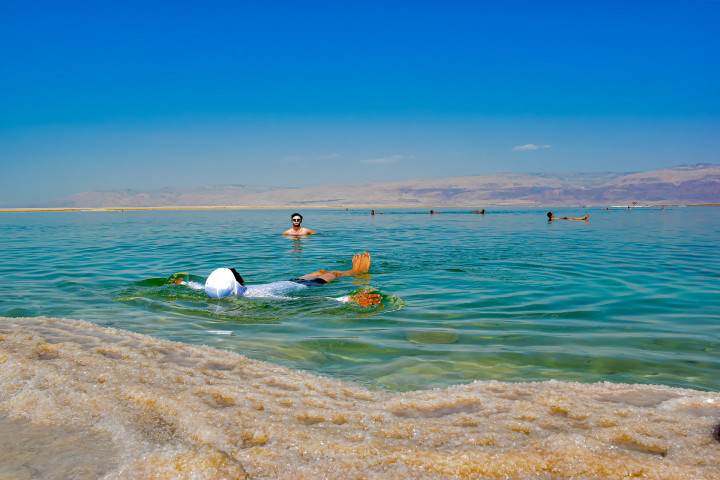
Sinkholes
As a result of the decreasing water level, cracks and holes appear in the bottom of the lake. This has caused sinkholes to form, especially on the Israeli side of the Dead Sea.
Walking along the shores of the Dead Sea can therefore be lethal, and is forbidden. Of course, you can stroll along the beach near your hotel, but you cannot go off the beaten tourist path.
You can regularly spot these sink holes on the way to the Dead Sea. At a certain point you can even sea that the original road has now disappeared in a sinkhole.
Should I spend my holiday at the Dead Sea?
Unless you have a skin condition, I would stick with a day trip. The area is desolate and there are no inviting restaurants or bars nearby.

The second part of our daytrip brings us to another Israelian highlight: Jerusalem.
Jerusalem
Jerusalem is in the top 20 of oldest, continuously inhabited cities in the world. It is the birthplace of Judaism and Christianity, and is considered a holy city by Jews, Christians, and Muslims. The three largest religions in the world live side by side within its old city walls.
Both Israel and Palestine consider Jerusalem to be the capital. So they agree on at least one thing. The rest of the world does not recognise Jerusalem as the capital of Israel. Jerusalem has been a sensitive topic in the conflict between Israel and Palestine.
Jerusalem is divided into an eastern and a western part, and has about 900,000 inhabitants.
The city is home to 220 historic monuments, so, of course, one day is not enough. We visited Jerusalem’s highlights in the short amount of time we had.

Old City of Jerusalem
The Old City lies in the eastern part of Jerusalem and is completely surrounded by a wall. The wall is 4 km long, about 12 meters high, and has 34 towers and 8 gates. Israel annexed this part of the city in 1967, a source of frustration for the Palestinians who view the Old City as their capital.
The most important religious buildings lie in the Old City of Jerusalem.
The city is divided into four areas:
- The Armenian Quarter,
- The Muslim Quarter,
- The Jewish Quarter,
- The Christian Quarter.
Until 1967, there was also a Moroccan quarter, but it was completely destroyed. The area is now the square in front of the wailing wall.
The Old City can be accessed through 8 gates. However, as non-Muslim you cannot just use any gate.
Its immense symbolic value means that the Old City and the walls of Jerusalem were added to the UNESCO World Heritage Site list.

Jerusalem highlights
Mount of Olives
Just before you reach Jerusalem you take the exit to the 827-metre high Mount of Olives where many Biblical events took place. The Mount of Olives is said to be the place where God will start waking the dead at the end of time. This makes the Mount of Olives a popular place to be buried for Jewish people. It is said that about 150,000 people lie buried here.
The popular “Jerusalem Viewpoint” lies on the Mount of Olives. You have a phenomenal view of Jerusalem from here.

After this first glimpse of Jerusalem we drove on into the city to walk the “Way of Suffering” in the Old City.
The Way of Suffering or via Dolorosa
The Way of Suffering or Via Dolorosa follows the route that the Franciscans have followed every Friday afternoon for centuries. The route runs from the Lions’ Gate to the Church of the Holy Sepulchre, the place where Jesus is said to be buried. Tradition states that Jesus walked this route on the way to his place of execution, Golgotha. He carried the cross on his back, which is why it is called The Way of Suffering.
Along the way are the Stations of the Cross. These shields or statues tell the story of this route.
- Station I: Jesus is condemned to death
- Station II: Jesus carries the cross on his shoulder
- Station III: Jesus falls under the cross
- Station IV: Jesus meets his holy mother
- Station V: Simon of Cyrene helps to carry the cross
- Station VI: Veronica dries the face of Jesus
- Station VII: Jesus falls again
- Station VIII: Jesus comforts crying women
- Station IX: Jesus falls again
- Station X: Jesus is robbed of his clothes
- Station XI: Jesus is nailed to the cross
- Station XII: Jesus dies
- Station XIII: Jesus is taken down from the cross
- Station XIV: Jesus is placed in his grave



The route takes you through winding alleys, through gates and across squares. The road is paved with old stones and there are various shops along the road.
If you travel to Jerusalem with children, it might be best to leave the buggy at home. The roads are very uneven, and there are a lot of steps to take.
Church of the Holy Sepulchre
At the end you reach the Church of the Holy Sepulchre or Church of the Resurrection. It was built in the location where Jesus was crucified and buried. The original church was destroyed a number of times, and the current church dates back to the 12th century.

Just inside the church you find a mosaic portraying the crucifixion and death of Jesus. One of the scenes depicts the body of Jesus on a slab while he is washed. The slab lying on the floor before the mosaic is said to have been the slab Jesus was laying on. Around the slab you will find dozens of worshippers who are praying and crying while their forehead rests on the slab. I felt that it bordered on religious frenzy, and felt very uncomfortable.

You will find two graves a bit further inside the church. The church is built around these graves that were hewn out of the rock. There is a discussion about which of the two is the actual tomb of Jesus, but I guess we’ll never know.
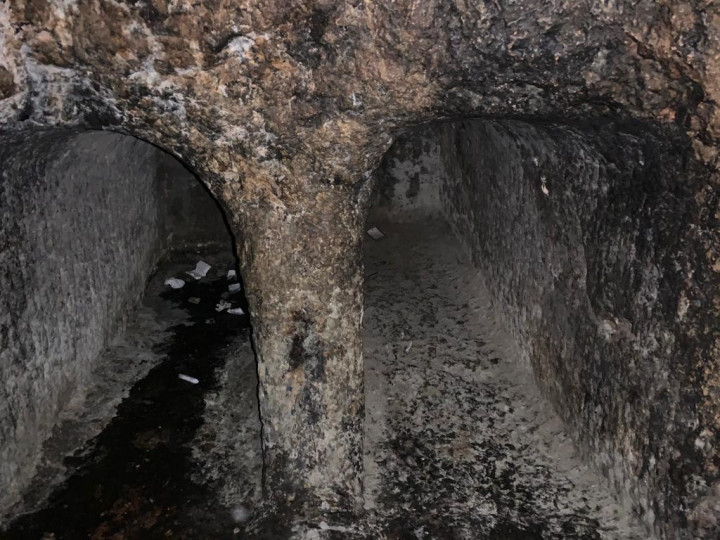
Dome of the Rock
From the viewpoint on the Mount of Olives you can clearly see the golden dome of the Dome of the Rock. This Islamic shrine is built on the Temple Mount, and was built between 688 and 692 on the site of a wooden mosque. Many people think this is a mosque, but it is not. It is a memorial site, and one of the most important visitor attractions of Jerusalem.
The Dome of the Rock is recognised as the place of Abraham’s sacrifice by Jews, Christians, and Muslims. If you have time it is possible to visit the Dome of the Rock.
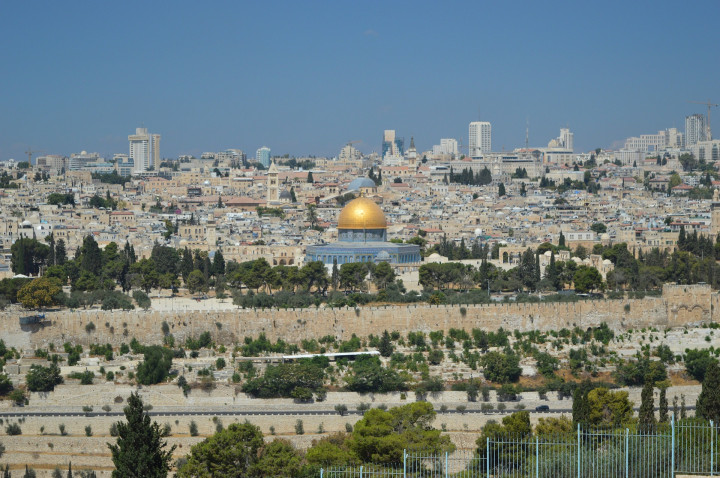
Al-Aqsa mosque
The Al Aqsa mosque is located beside the Dome of the Rock, and provides space for 5,000 worshippers. It was built around 711, and is the third holiest place in Islam, after the Kaaba in Mecca and the Prophet’s Mosque in Medina. Only Muslims are allowed to enter the mosque.
Western Wall or Wailing Wall
The highlight of your visit to Jerusalem is a visit to the Wailing Wall, the most important highlight of Jerusalem. These days there is only a small section left of the Roman wall that was built around the Temple Mount to support it. The wall was originally part of the Second Jewish Temple that stood here until it was destroyed in the year 70 by the Romans. It is the western wall of the temple, hence its name.
Many Jewish people came to the wall to complain about the destruction of the temple and consequently it was dubbed “the Wailing Wall”.
The square in front of the wall is divided into two parts. Left for the men, the right for the women. Any men without a skull cap were handed a white paper one.
If you visit the Wailing Wall on Friday evening, it is very busy as it’s the start of the Sabbath. However, it does mean there is a very special atmosphere, and braving the crowds is worth it.

Jewish traditional clothing and sidecurls
While you are at the wailing wall, you notice that there are lots of differences between the Jews. There are many different types of black hats, for instance. Apparently, every country has its own shape of hat. It means that the hat can tell you where the wearer is from.
Some Jews wear a fur hat. This shtreimel is given to them by the in-laws when they get married, and they wear it the rest of their life. The fur hat is a real status symbol, the higher the hat, the better. It is the Chanel for the Jewish people.
The Orthodox Jews wear sidecurls or payots near their ears. They grow from the temple, the most sensitive part of the face. The Jews are not allowed to shave in that area as Jewish mysticism views this as the dividing line between the front (intellect) and the back (spirituality) part of the brain. This is why the long locks are grown in that area.
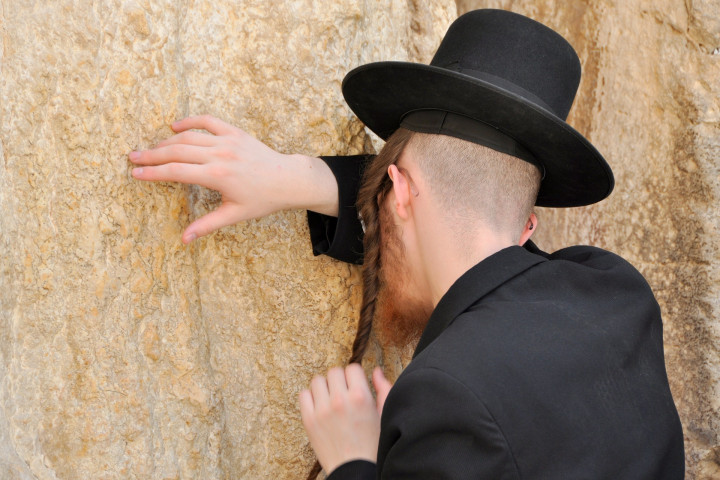
We spent half a day visiting the highlights of Jerusalem, but it whetted the appetite. We are sure to return to the city for a more extensive visit, and to take in the sights of Nazareth and Bethlehem as well.
Is Israel on your bucketlist?
Like it? Pin it!
